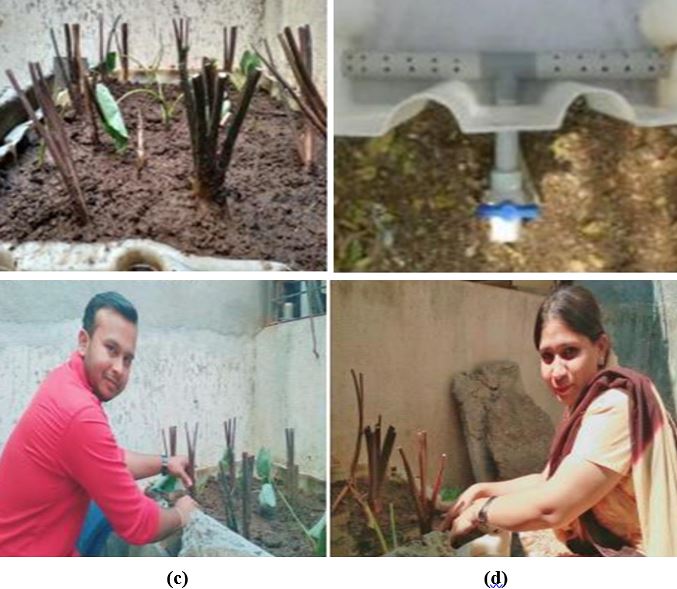Colacasia Plants Used Treat Waste Water from Homes
Prasenjit S1*, Tanvi G2, Sandeep R3
DOI:10.54741/asejar.1.1.3
1* Sikdar Prasenjit, Student, Department of Botany, Bethune College, West Bengal, India.
2 Gosh Tanvi, Student, Department of Botany, Bethune College, West Bengal, India.
3 Roy Sandeep, VisitingFaculty, Department of Botany, Bethune College, West Bengal, India.
One of the low-cost wastewater treatment options is Root Zone Technology. We can treat non-point sources effectively, with the help of this method. To achieve this purpose, trailed by the source area bed, we must distinct non-point bases into created channels inside the river bank, or if the non-point bases are natural nulls, we are able to deliver this system through their channel. We set up a channel on which I created a source area bed and conducted a laboratory examination the director's production on a variety the factors. The two parameters for which channels must be built are flow rate and detention time. As a result, I'm adjusting the flow rate to see how the parameter changes over time. When we obtain the best result with the most flow, we say we've optimized. For the three-day, seven-day, and twenty-one-day detention periods, I received satisfactory results. Using this information, I created a root zone bed system for the identified actual domestic sources.
Keywords: colacasia plants, waste water, homes, technique
| Corresponding Author | How to Cite this Article | To Browse |
|---|---|---|
| , Student, Department of Botany, Bethune College, , West Bengal, India. Email: |
Prasenjit S, Tanvi G, Sandeep R, Colacasia Plants Used Treat Waste Water from Homes. Appl. Sci. Eng. J. Adv. Res.. 2022;1(1):14-21. Available From https://asejar.singhpublication.com/index.php/ojs/article/view/4 |


 ©
© 




